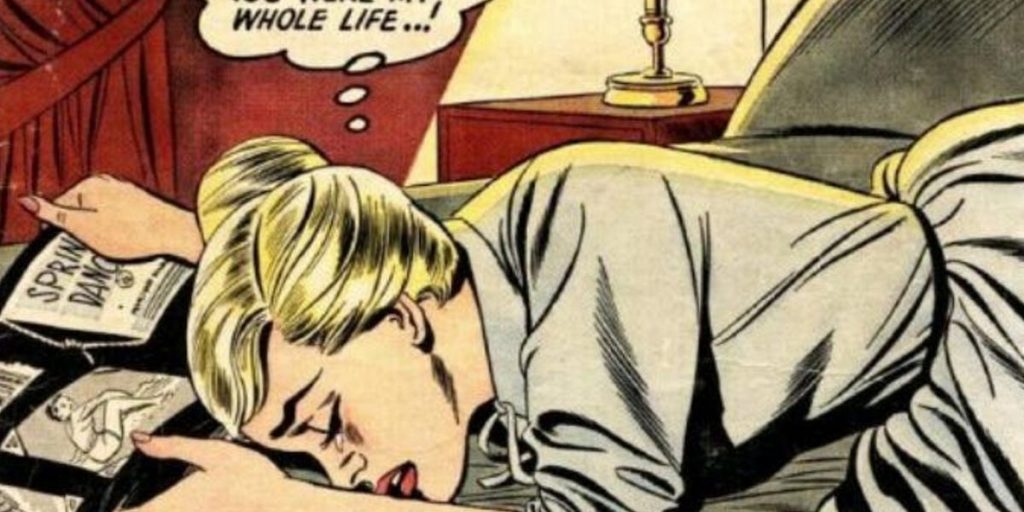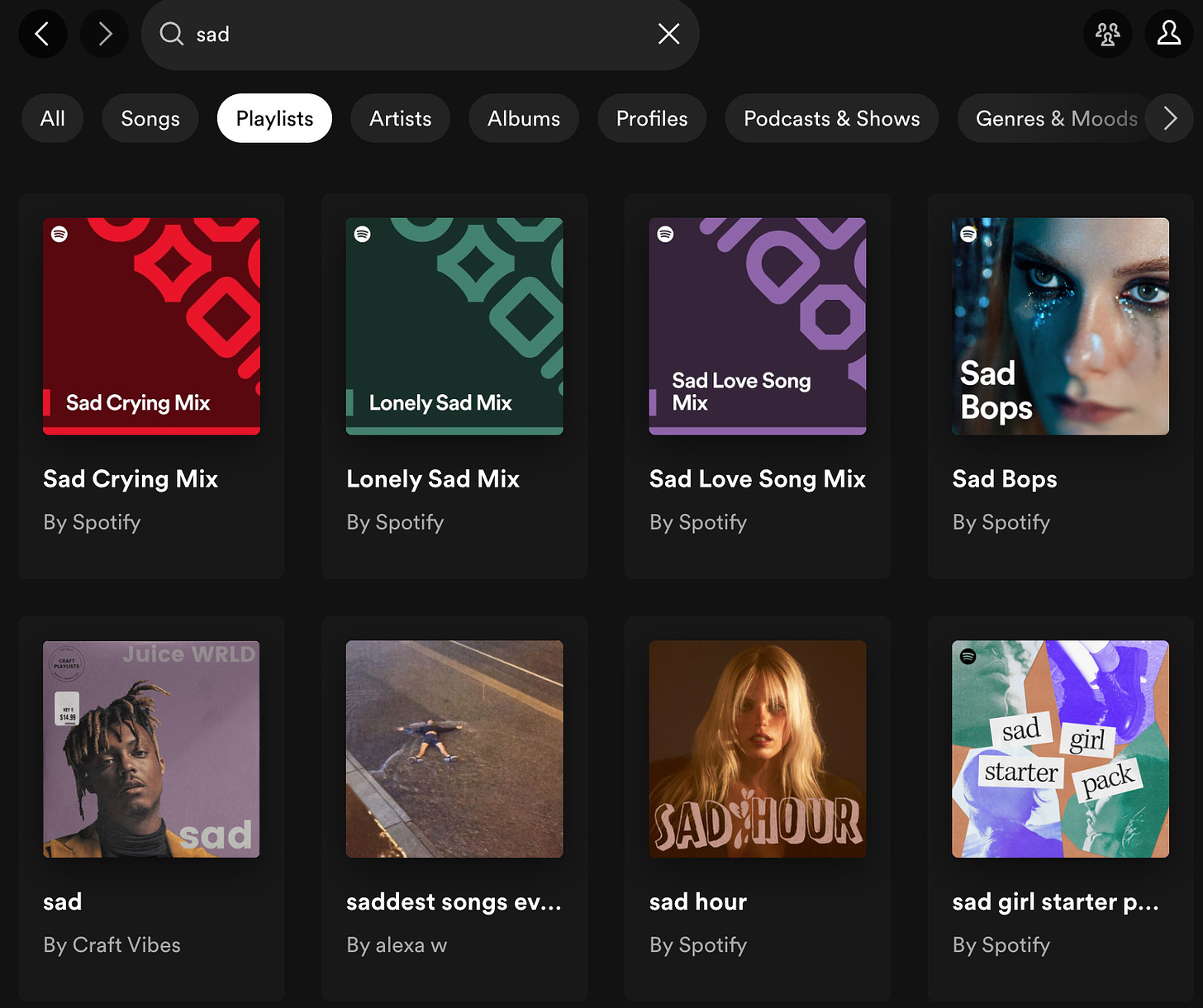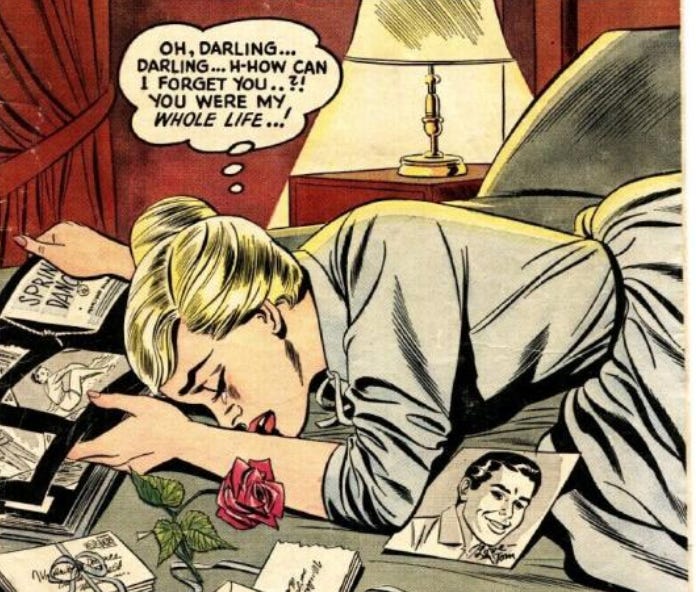Why Is Music Getting Sadder?

I’m told that the top search term at Spotify among teens is “sad.”
And it’s more than music. Sadness is so widespread among youngsters (especially teen girls) that the Centers for Disease Control is now tracking it. So we shouldn’t be surprised that music and cultural indicators reflect the same reality.
Even the candidates for song of the summer are filled with quiet despair—so much so that Spotify declared it the “bummer summer.” Feeding the trend, the platform serves up countless sad playlists.
It’s hard to put a positive spin on this. But Spotify did its best. “Gen Z has brought a raw, authentic new reality to expressing their emotions,” the company declared in a press release. “We wanted to celebrate this powerful thing they’re doing.”
The message to teens is a little awkward: You’re miserable and alone. But, hey, that’s edgy and authentic too.
So what songs do sad teens want to hear during a bummer summer?
“The most obvious feature of a sad song is the tempo,” explains music psychologist Michael Bonshor. “It tends to be fairly slow, often between about 60 to 70 beats per minute—like a relaxed heartbeat.”
Not long ago, this tempo was a rarity on the Billboard chart—and when you did hear a slow song it was usually a romantic love ballad for slow dancing. But the average tempo of a hit song has been getting slower since the dawn of the new millennium, but slow dancing has almost disappeared.
So we have an odd situation. The slow tune is no longer dreamy music for couples, but sad, lonely music for the isolated and depressed. It doesn’t help that handheld devices, earbuds, and other pervasive technologies have turned music into something consumed alone, not communally as it was in past.
Another telltale sign of sad songs is the minor key. This rise in minor key songs has been dramatic. Around 85% of songs were in a major key back in the 1960s, but in more recent years this has fallen in half.
My favorite guru of music data analytics, Chris Dalla Riva, has sent me this chart showing the increasing share of Billboard #1 hits in a minor key. (By the way, I highly recommend Chris’s Substack Can’t Get Much Higher.)
This is an enormous change—and supports my view that our culture shifted into a darker, more pessimistic phase during the late 1990s and early 2000s. The percentage of minor songs appears to have stabilized recently, but at a much higher level than the 1970s and 1980s.
Lyrics have changed in tandem with the rise of the minor key. Once again, this is aligned with my thesis that a culture of anger rose to prominence in US society around the time of 9/11—but that the trend actually started during the decade leading up to that event. It’s certainly true that song lyrics got angrier and more antisocial around that same time.
Chris has also tracked the use of the words love and hate in number one hit songs—and we see a similar timeline here.
Love still conquers hate—but just barely.
Some have suggested that this change is due to a rise in narcissism. “In the early ’80s lyrics, love was easy and positive, and about two people,” notes psychologist Jean Twenge. “The recent songs are about what the individual wants, and how she or he has been disappointed or wronged.”
My view is that the root causes here are more societal and cultural, and less built on individual personality traits. But those two forces are, of course, interconnected. And the end result is the same: gloomy songs with harsh lyrics.
Pundits trying to make sense of Oliver Anthony—who went from an unsigned artist living in a trailer to a hitmaker with a number one song over the course of a few days—may want to probe these larger cultural shifts. That unprecedented event could not have happened if the prevailing ethos wasn’t predisposed to hot (not cool) and down (not up).
The experts try to analyze this in terms of politics—because they analyze everything in terms of politics nowadays. But the hot cultural tone is larger than any political agenda, and cuts across party lines. (For more on this, see my “15 Observations on the Emerging Vertical Dimension of Cultural Conflict.”)
Politics does not shape the culture. Culture shapes politics. You can hear the future in hit songs long before any campaign slogan grasps the new reality.
By the way, more songs now rely on ambiguous key centers—those vamping chords sometimes never resolve. You can often debate whether the music is major or minor, but the lack of resolution rarely produces a happy, optimistic ambiance.
Not long ago, blue progressions and dominant 7 chords were everywhere on the hit charts. They had powerful resolutions. But those blues changes have now gone missing in action. The most characteristic harmonic device in contemporary popular music is a four chord repeated pattern which keeps moving back between a major chord and a minor chord located a third away.
In other words, we have replaced the powerful resolve down a fourth or fifth, with the more ambiguous shift in the bass line of a third. So if you hear a F major chord in a pop song today, you will probably soon hear a A minor chord (up a third) or D minor chord (down a third)—and vice versa. If you hear a C major, get ready for E minor or A minor. If you hear a G major, be on the alert for B minor or E minor.
Taylor Swift likes this sound—hear her “I Knew You Were in Trouble” or “We Are Never Ever Getting Back Together” or “Cruel Summer” or dozens of other comparable songs. Real modulations are rare (although not totally absent—check out the end of “Love Story”), but even when they appear they don’t disrupt the larger pattern.
The emotional temperament of this static and repetitive approach is intriguing. It typically gives a song the quality of an anthem—those vamps provide a harmonic support for assertion, not resolution. (That’s also why these four-chord patterns are so suitable for hip-hop. Just try rapping over a 12 bar blues pattern by comparison, and you will see why the newer approach is more hip-hop friendly.)
I suspect that this harmonic structure explains Taylor Swift’s effectiveness in those huge sports stadiums. People are already familiar with declamatory anthems in such settings. Swift is just presenting a different kind of anthem. Instead of declaring a nation’s independence, she is asserting her own. That’s what you do with an anthem—you tell the world who you are and what you stand for.
But anthems also convey a sense that you’re embattled and surrounded by enemies on all sides. That’s true whether you’re looking at the rocket’s red glare or simply announcing that “We are the champions” or “We will rock you” or “We’re not going to take it.”
Sad and angry songs have flourished in other times and places—and we can learn from this. Songs about melancholy or even suicidal lovers were popular in the early days of German romanticism, and you find similar themes in the British folk ballad tradition. Folk ballads almost demand bloodshed and conflict, even if they also tell a love story.
When I researched the history of suicidal love songs, I reached the conclusion that conformist or authoritarian societies are especially fascinated by these stories. I note that newspapers in Nazi Germany frequently reported on the suicides of unhappy lovers—reading about these deaths was, for whatever reason, of great interest to the rank-and-file citizens of that regime. (I have some theories why that might be the case, but this isn’t the place to share them.) Curiously enough, Japan—Germany’s strident ally in World War II—also has a historical fascination with dark impulses and suicide in its popular culture.
A few years ago, people working on a very successful dystopian TV show asked my advice about the songs in the soundtrack. I suggested that characters in a repressive, overbearing culture would probably listen to songs about deadly love affairs. They didn’t take my advice—they preferred tyrannically disciplined music for their tyrannically discipline society— but I believe my view is psychologically sound.
If you live in a repressive society, songs about lovers making suicide pacts provide a cathartic release. At least that’s my working hypothesis.
And what about today?
I think the sad songs of our own culture are less fatalistic than those of earlier eras, and much angrier. I’m not sure if that’s an improvement. Maybe if the prevailing anger got channeled into a positive direction, I’d be more receptive to the trend. But I fear that this angry sadness simply feeds on itself.
I take some solace in knowing that no trend lasts forever. I’d be especially glad to see this one lose steam. Maybe by next summer we will be singing about carefree things again.
Let’s go surfing now. Everybody’s learning how. Come on a safari with me!
But somehow I doubt it. We probably have at least a few years more of minor chord dirges and angry country singers before we modulate back to the major.
Our whole society may need to experience a similar modulation before the songs get happier. In the meantime, we’re just vamping on those four chords and trying to survive a cruel bummer summer.





